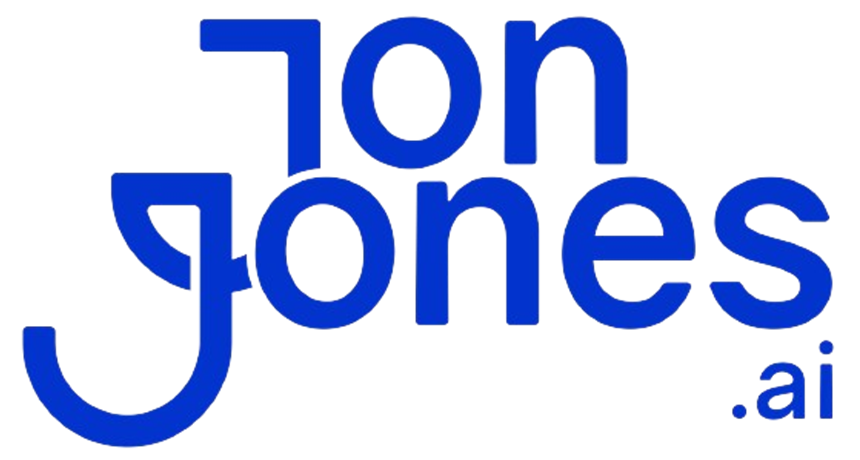Ever feel swamped juggling half a dozen apps just to ship one report? We’ve been there. Workflow orchestration tools (apps that line up and run tasks automatically) act like a conductor, cueing each step so your data flows without a hitch.
We tested seven top orchestration tools that turn messy handoffs into smooth pipelines. Next, you’ll see how they shave off manual steps, spot errors before they snowball, and free you to focus on big-picture insights.
Ready to watch your productivity soar?
Understanding Workflow Orchestration Tools

Workflow orchestration tools are software that link and manage multiple automated tasks across your business apps to complete end-to-end processes (a series of steps that finish a project). Think of it like a conductor guiding each section of an orchestra, so data moves smoothly and each step kicks off without you having to lift a finger.
These tools also handle errors and show you what’s happening at every stage. They retry failed steps, apply conditional logic (simple rules that decide the next action), and log progress with key metrics. Plus, many include a visual dashboard so you can see task dependencies at a glance.
Unlike business process automation, which focuses on automating single tasks or scripts, workflow orchestration tools manage the full sequence and how tasks interact. They’re not the same as process orchestration frameworks, which tie together multiple workflows across teams or even external partners.
Orchestration systems make your pipelines reliable and scalable by:
- Scheduling tasks at the right time
- Allocating resources efficiently
- Tracking dependencies so nothing slips through the cracks
- Handling errors with retries or alerts when you need to jump in
That means you can connect data ingestion (collecting data), predictive model training (teaching an algorithm to make forecasts), deployment, and reporting into one smooth operation. We’ll help you watch your processes flow without manual handoffs, freeing you up to focus on insights, not interruptions.
Key Features of Workflow Orchestration Tools

- Event-driven triggers kick off workflows automatically when real-world events happen. For example, when you drop a new invoice CSV (comma-separated values file) into AWS S3 (cloud storage), your billing pipeline starts running on its own.
- Parallel execution lets you run multiple steps side by side. The system spins up extra servers or containers (mini virtual machines) so everything wraps up faster.
- API hooks (ways for your code to talk to the workflow tool) give developers a simple launchpad. A call like POST /workflows/run can trigger data validation or nightly audits from any script.
- Artifact connectors link your inputs and outputs to services like AWS S3, Google Cloud Storage (GCS), or Git. That way, you keep your configurations and results all in one place.
- Role-based access control (RBAC) limits who can view or run each workflow. You pick which teammates have access so your sensitive steps and data stay locked down.
Comparing Leading Workflow Orchestration Tools

Here’s a quick look at popular workflow orchestration tools: how you deploy them, their biggest perk, and the price you’ll pay.
| Tool | Deployment Model | Key Strength | Pricing |
|---|---|---|---|
| Apache Airflow | Open-source, you host it yourself | Python DAGs (workflow maps) for complex task links | Free |
| Prefect | Open-source core + cloud option | Built-in retries, logging, caching & failure alerts | Core free; cloud pay-as-you-go |
| Luigi | Open-source Python package | Robust batch pipelines with auto-retries | Free |
| Argo Workflows | Kubernetes-native open-source | Parallel containers & cloud-agnostic DAG tracking | Free |
| AWS Step Functions | Fully managed AWS service | Tight AWS ecosystem integration | $0.025 per 1,000 state transitions |
| Camunda | Open-source core + paid enterprise suite | BPMN modeling (standard workflow diagrams) & extensive integrations | Core free; enterprise plan |
Practical Use Cases for Workflow Orchestration Tools

Many teams use ETL (extract, transform, load) workflow managers to pull customer data, clean it up, and push it into analytics dashboards without manual scripts. We’ve seen dashboards light up with fresh sales numbers every morning. It’s a small change that saves hours of grunt work.
Next, an ML (machine learning) pipeline scheduler takes over data prep, model training, and deployment so your predictive reports refresh themselves. Imagine your forecast updating at 2 AM while you sleep. Nice.
These tools feel like autopilot for your data pipelines. They retry failed tasks, track versions, and send alerts when something goes off script. So you stay focused on insights, not on chasing jobs.
Software teams often pick CI/CD (continuous integration/continuous deployment) solutions to package, test, and ship code smoothly. Every merge kicks off linting, unit tests, and container builds in real time. When something breaks, the engine pauses downstream steps and shoots your team an alert in seconds. That cuts debug time and lets developers innovate fast.
And orchestration doesn’t stop at analytics and dev. It also powers IoT device updates and file transfers across systems. For example:
| Use Case | What It Does |
|---|---|
| IoT Firmware Updates | Roll out new code to thousands of sensors in one go, no sweat |
| FTP/SFTP File Sync | Automate secure transfers of invoices or purchase orders |
| Scheduled Reports | Deliver daily or weekly summaries straight to inboxes |
Results matter.
Selecting the Right Workflow Orchestration Tool for Your Needs

Ever feel stuck choosing between a cloud orchestration service (a managed way to run and link your workflows) and self-hosted pipeline automation (software you install and run on your own servers)? We’ve been there.
First, look at your setup.
Cloud orchestration frees you from server upkeep. You only pay for what you use. You’ll free up your team to focus on product, not hardware.
Self-hosted pipeline automation hands you full control and rock-solid cost predictability. But you’ll need someone on your team to manage installs and updates.
Budget matters too. Open-source suites cost nothing upfront, but they lean on your in-house ops. Subscription plans have set fees and usually include updates and support. Nice and predictable.
Integration often sways the choice. If you rely on third-party APIs or connectors, pick a multi-cloud pipeline handler that speaks AWS, Azure, and on-prem systems.
At peak loads, resource allocation tools will spin up extra compute power so you don’t hit a wall.
Want your workflows to fire on a git commit? Make sure version control triggers are built in.
And if your pipeline looks more like a tangled family tree, check for strong dependency management modules (they keep complex DAGs, directed acyclic graphs, running smoothly).
Support and compliance seal the deal. Open-source communities can rescue you with fixes and free roadmaps. But if you need 24/7 help, vendor-backed support is worth the fee.
In regulated industries, look for built-in security audits and compliance certifications.
When your demands grow, elastic resource allocation and proven version control triggers make sure your workflows stay reliable, and policy-friendly.
Getting Started with Workflow Orchestration Tools

Apache Airflow Quickstart
Apache Airflow is a workflow orchestration tool (it schedules and tracks tasks). Okay, let’s install it and spin it up.
In your terminal, run:
pip install apache-airflow
export AIRFLOW_HOME=~/airflow
airflow db init
This sets AIRFLOW_HOME and initializes the database. Next, we’ll create a DAG file (DAG means Directed Acyclic Graph, a map of your tasks).
Save this as dags/simple_dag.py:
from airflow import DAG
from airflow.operators.python import PythonOperator
from datetime import datetime
def hello():
print("Hello, world!")
with DAG(
"simple_dag",
start_date=datetime(2023, 1, 1),
schedule_interval="@daily",
default_args={"retries": 1},
) as dag:
task = PythonOperator(task_id="hello_task", python_callable=hello)
This code sets up a daily job that runs our hello() function. Nice.
Now start Airflow’s scheduler and web server. In one terminal:
airflow scheduler
Then in another:
airflow webserver
Finally, open http://localhost:8080 in your browser. You’ll see the Airflow UI and your DAG ready to go.
Prefect Core Setup
Prefect is another orchestration tool (it manages and runs pipelines). Let’s get a simple flow running locally first.
Install Prefect:
pip install prefect
Now define a task and a flow. A task is a single step; a flow is a collection of steps.
from prefect import task, Flow
@task
def add(x, y):
return x + y
with Flow("add-flow") as flow:
result = add(1, 2)
flow.run()
You just ran “add-flow” locally. Got it.
To kick it off from your terminal, use:
prefect run flow --name add-flow
If you want to schedule this flow remotely, create a YAML file. Save this as flow-config.yaml:
version: 2
flows:
- name: add-flow
storage: s3://my-bucket/
schedule: "0 2 * * *"
Then register your project:
prefect create project
Now Prefect will run your flow on the cron schedule you set. Sit back and enjoy data automation.
Final Words
In the action we defined workflow orchestration tools and saw how they manage end-to-end processes across apps. We contrasted them with task-level automation and broader process orchestration, highlighting scheduling, error handling, and dependency tracking.
Next, we compared leading suites and explored ETL, ML, CI/CD, IoT, and report automation use cases to spark ideas.
Then you learned criteria for choosing the right fit and got quick start steps for Airflow and Prefect.
With these workflow orchestration tools in play, you’re ready to boost efficiency and fuel growth.
FAQ
- What are workflow orchestration tools?
- Workflow orchestration tools integrate, schedule, and manage automated tasks across applications to complete end-to-end processes, tracking dependencies, sharing data, and triggering next steps for reliable, scalable workflows.
- How do workflow orchestration and workflow automation differ?
- Workflow orchestration manages sequencing and interaction across multiple tasks and systems, while automation focuses on running single tasks without coordinating complex dependencies.
- Which open-source workflow orchestration tools are available on GitHub?
- Popular open-source projects on GitHub include Apache Airflow, Temporal, Camunda, Activiti, Apache NiFi, Kubeflow, Prefect, and Luigi—all with active communities and frequent updates.
- What are some top workflow orchestration tools?
- Top tools include Apache Airflow for Python-defined DAGs, Temporal for microservices workflows, AWS Step Functions, Prefect, Argo Workflows, and Camunda BPM for business process modeling.
- What makes the best orchestration tool?
- The best tool fits your infrastructure (cloud vs self-hosted), offers scheduling, retry and error handling, monitoring, and integrations, and scales within your budget and team skills.
- Is Apache Airflow a workflow orchestration tool?
- Apache Airflow is a Python-based orchestration platform that defines, schedules, and monitors complex task dependencies as directed acyclic graphs, making it a go-to choice for data pipelines.
- Which orchestration tools support Python?
- Python-friendly orchestration solutions include Apache Airflow, Luigi, Prefect, and Argo Workflows, allowing you to define tasks and pipelines using familiar Python code and libraries.






